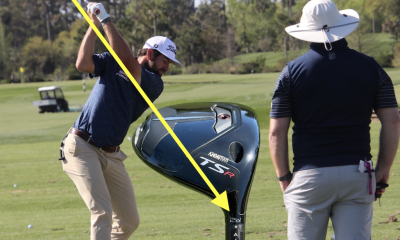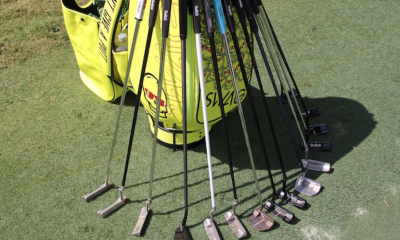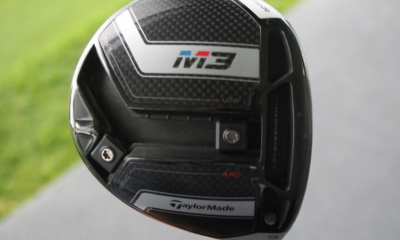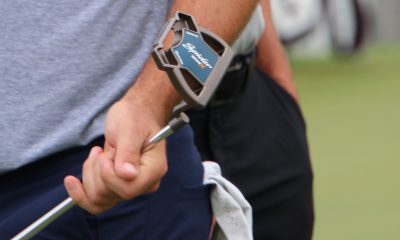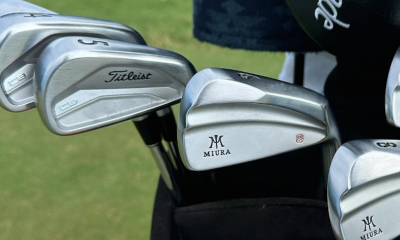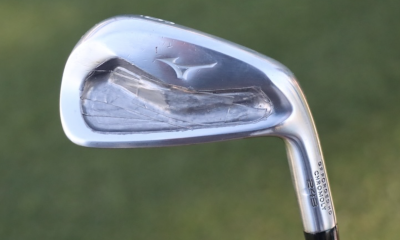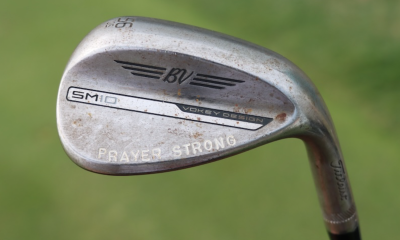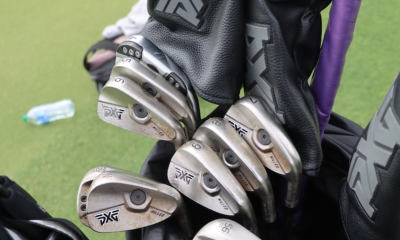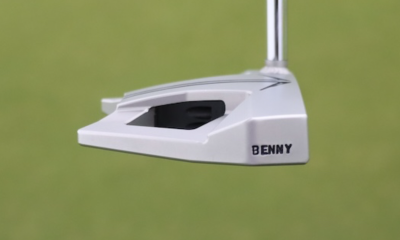Putter Reviews
Miura KM-005 Putter Review
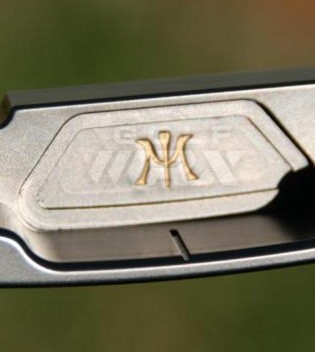
By pitbull808
I’ve played many Miura putters through the years. Many who know me personally or my WITB know that there are not many putters made that haven’t gone in my bag at least once. I’ve become pretty much a walking putter reviewer as I’ve experienced so many putters.
The most recent Miura putters I’ve used are the KM-350 and KM-007. Since I’ve recently added the Miura CB-501 irons to my bag as well as the SIT460 dirver, naturally for me or some may say unnaturally for them, I had to buy another putter! I’ve rolled the KM-005 in my local shop a few times and have always coveted it. True… I’ve coveted pretty much every putter made that I haven’t owned, but this one was different. Getting it would be something NEW from Miura that I haven’t had and would match great with my irons, wedges and driver! What better reason to get a new putter! ![]()
As with my past Miura additions to my bag, I had Joey the owner of Aloha Golf Center, my local Miura distributor fit me to the KM-005. As I’ve been fitted many times in the past by them for putters, length was pretty much my standard 34.5. We did a little work to get the lie angle and loft correct for me though as it was a new putter head and style for me.
Click here for more discussion in the “Putter” forum.
Pro’s:
Miura… how much more needs to be said. A classic shape forged and milled from mild carbon steel that has a soft feel and just exudes a richness not found in other putters.
Cons:
It’s a classic shape that’s doesn’t have all the newfangled alignment marks, high moi, white paint, roll grooves and inserts. For me, that’s all a pro but for some they might want it. ![]()
Bottom Line:
A classic shape designed by the “hands of god” Katsuhiro Miura. A putter that feels as great as it looks and inspires putting confidence when it’s in your hands.
The Review:
Miura KM-005 1957 Series Putter
350 grams
34.5”
4* loft… up 1* from the 3* standard for Miura
72* lie angle…up 2* from the 70* standard for Miura
Looks:
On initial inspection of the KM-005, for me it just exudes class all over it. Miura takes style to another level with all their clubs and the KM-005 screams it without flash and stampings all over to remind you what you bought in the first place. Even the sight line is left unpainted (although I did paint mine black). The only engraving you’ll see not on the sole is the gold M and tee signifying Miura’s logo in the cavity of the putter. On the sole is the 1957 Miura logo and simple KM-005 Forged engraved. 1957 signifying the year Katsuhiro Miura started in the golf business and also that the KM-005 is a limited edition putter series.
Miura calls the finish on the KM-005 “oiled chrome”. The “oiled” part isn’t seen until you bring it out in the sunlight. You don’t get the rainbows of color seen in some other finishes on the market but a deep, dark bronze/gold look that seems aged at the same time being brand spanking new. Since I’ve been using my KM-005 for a few months now, I’ve found the oiled chrome finish is not only gorgeous but extremely durable. It looks like it might be delicate but it looks pretty much like the day I got it. In fact, all the photo’s I’ve included in this review were just taken after using it constantly for the past months.
A feature I also noticed when I first saw the KM-005 which also made me want to try it was the shorter plumbers neck. Although there are many heel/toe weighted putters with plumbers necks, it’s pretty obvious to even the novice putter collector that no two are alike. Just read the putter forum for a minute and see the people argue Ansers and Newports and you’ll figure that out quickly!
The shorter plumbers neck in the KM-005 changes the toe hang to about almost 5 o’clock. It seems to fit in the middle of the usual plumbers neck length and a flow neck heel/toe weighted putter. It definitely changes the balance of the head when stroking.
The topline in the KM-005 also appears thicker than other heel/toe putters. It’s a feature I’ve always looked for and appreciate in putters.
The milling of the face is also different than most other putters. Not the typical circular mill marks that have become “de rigueur” but a tightly milled pattern that offers a bit of simplicity yet still shows a ton of craftsmanship behind it.
Overall, a beautiful putter that I can’t seem to tire from looking at.
Performance/Playability:
The KM-005 putter is one of those putters that even before you roll it, you know it’s going to feel super. The looks alone of it resting behind the ball make you hear the angels warming up their voices ready to sing. ![]()
The shape of the KM-005 fits well behind the ball. The cavity helps to frame the ball and although the lack of huge gaudy alignment marks the shape alone is enough. The thicker topline for me works great in lining up my ball perpendicular to my target line as well. The whole look of the putter creates a beautiful picture behind the ball.
The KM-005 puts a great roll on the ball with a gentle click. The balance of the putter makes stroking the ball very effortless. I’ve told many friends when talking about putters, there are some you feel you need to be a bit more handsy or worry about turning the toe over and some that I simply call “instamatics”….point and shoot putters. The KM-005 is definitely one of those instamatics.
Rolling the ball smoothly is accomplished not by grooves, inserts or any of the plethora of new fangled inventions. Just a great balanced head that pulls you right back to the ball after your backstroke. You can get mad at yourself for missing a putt but the KM 005 is not easy to blame for the misses! Yes, every putter is usually not to blame but the KM-005 makes it harder. ![]()
Distance control was immediately achieved. There didn’t seem to be the normal break in period where I’d be on a putting green for an hour attempting to achieve different distances. Again this brings to mind the balance of the head and the instamatic overall nature of the putter.
Click here for more discussion in the “Putter” forum.
Feel:
Putter feel is sooooooooo subjective. I’ve been asked hundreds of times from guys who have messaged me regarding my “what’s in the bag” putters or in golf shops when I’m doing my normal one hour in a putting coral, “how does that putter feel???” Everyone’s sense of feel is different. Some like putters to have a clickier nature or a more muted feel like those with inserts. I myself have a roving feel. I wouldn’t have hundreds of putters if I could contain myself to one type of feel. Each putter has a different feel that makes it seem a bit different from another which in itself makes it hard for me to get rid of or immediately makes me never roll another ball with. For the same reason I’ve probably got forty plus 8802 styles, even duplicate heads, it’s weird to ME that none feel identical.
With that said…the feel of the KM-005 is one of those different heads. The feel that I’ve found in Miura putters is definitely different, just like the irons are. Miura forges the carbon steel of their putters like their irons. Each head is filled with history and craftsmanship that is unmatched by the masses.
The mild carbon steel seems to stick to the ball a millisecond longer than on other putter heads. The softness envelopes the ball and in the moment it takes the soft audible click to reach your ears, the face sends the ball in a gentle roll towards the hole. Without grooves or inserts, the milled face of the KM 005 sends the ball forward with a gentle feel that transfers to your hands so intuitively distance control is magnificently achieved.
Overall Bottom Line:
I feel the KM-005 is destined to be one of those milestone putters for Miura and for putter fans in general. The beautiful look, the graceful nature of the putter, the soft incredible feel that registers immediately in your mind will have you wanting for more immediately. Once you roll it, you will want to roll it again and again. For me it had an addictive feel to it where I stroked it and loved it so much, it was a purchase that quickly became necessity over just a want. The KM-005 easily matches up if not surpasses many of the putters made on the market.
The Miura KM-005 is a putter that you will treasure and inspire your putting confidence just by holding it in your hands. I highly recommend giving the Miura KM-005 a test roll.
Click here for more discussion in the “Putter” forum.
- LIKE24
- LEGIT1
- WOW7
- LOL0
- IDHT0
- FLOP0
- OB1
- SHANK0
Equipment
Blade vs. mallet: What style putters do the top-50 players in the world use? (2022 update)
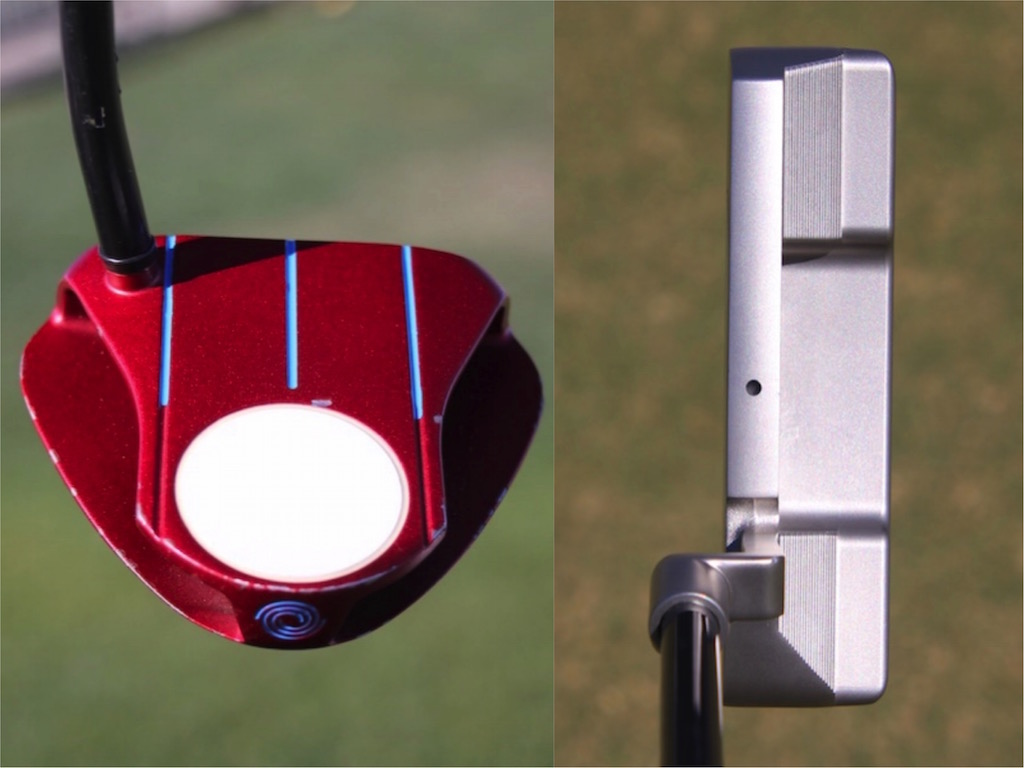
Four years ago, I wrote an article where I analyzed the putters that the top-50 players in the world were using, and the top-50 players in strokes gained: putting. I wanted to find out whether more mallet-style putters, or blade-style putters, were being used by the world’s best.
In 2018, I found that 44 percent of the top-50 players in the Official World Golf Rankings were using mallet style putters, and 56 percent of the top-50 in strokes gained: putting were using mallet putters.
Flash forward to 2022, and it would seem that more and more top golfers are switching into mallet putters – Scottie Scheffler, for example, just switched into a mallet putter after using a blade-style putter throughout his career.
What are the actual numbers, though? Are more top PGA Tour players really using mallet putters these days, or is the shift overblown?
I wanted to find out.
For my research, I simply went through the most recent GolfWRX WITB photos, and the most recent photos on Getty Images, to figure out what style putter each player in the Top-50 in the OWGR is using, as well as each Top-50 player in strokes gained: putting on the PGA Tour for the 2021-22 season.
Below are the results:
Top-50 in OWGR: Blade or Mallet?
Mallet putter users, 62 percent (31 out of 50)
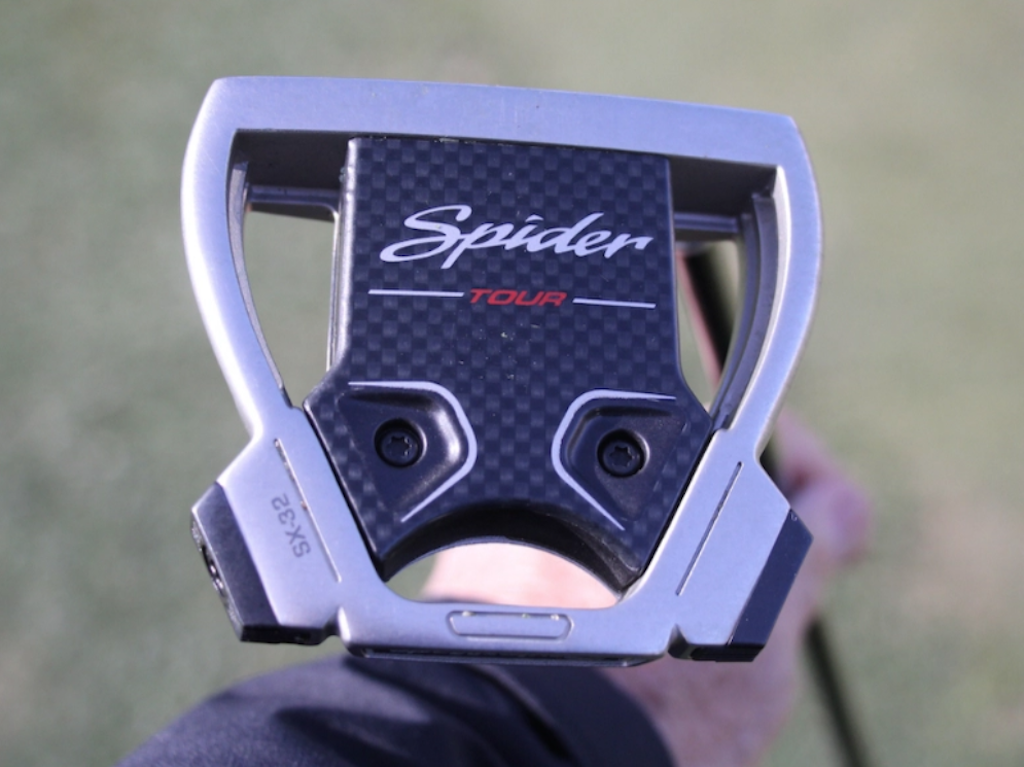
Rory McIlroy’s TaylorMade Spider Tour mallet putter
Rory McIlroy (No. 1: TaylorMade Spider Tour Hydroblast)
Scottie Scheffler (No. 2: Scotty Cameron T-5.5 Proto)
Patrick Cantlay (No. 4: Scotty Cameron T5 Proto)
Jon Rahm (N0. 5: Odyssey Rossie S White Hot OG)
Xander Schauffele (No. 6: Odyssey O-Works #7 CH Red)
Will Zalatoris (No. 7: Scotty Cameron Circle T Phantom X T-11 Proto)
Justin Thomas (No. 8: Scotty Cameron T5 Proto Tour-Only custom)
Viktor Hovland (No. 11: Ping PLD DS 72)
Sam Burns (No. 12: Odyssey O-Works 7S)
Billy Horschel (No. 16: Ping PLD Sigma 2 Tyne 4)
Cameron Young (No. 17: Scotty Cameron T5 prototype)
Max Homa (No. 18: Scotty Cameron Phantom X T5.5 Prototype)
Sungjae Im (No. 20: Scotty Cameron Flowback 5 Prototype)
Shane Lowry: (No. 21: Odyssey DFX 2-ball)
Abraham Ancer (No. 23: Odyssey White Hot No. 5 Stroke Lab)
Keegan Bradley (No. 25: Odyssey Versa Jailbird)
Sepp Straka (No. 27: Odyssey Tuttle Stroke Lab)
Tyrrell Hatton (No. 28: Ping Vault Oslo)
Kevin Kisner (No. 29: Odyssey 2-Ball 11)
Dustin Johnson (No. 30: TaylorMade Spider GT Black)
Corey Conners (No. 31: Ping PLD Prototype)
Tom Hoge (No. 32: TaylorMade Spider X Hydroblast)
K.H. Lee (No. 33: Odyssey Works Versa 2-ball)
Adam Scott (No. 34: L.A.B. Golf Mezz.1 prototype)
Aaron Wise (No. 36: TaylorMade Ghost)
Brian Harman (No. 37: TaylorMade OS CB)
Daniel Berger (No. 43: TaylorMade Spider X Hydroblast)
Jason Kokrak (No. 44: Bettinardi Studio Stock 38)
Harold Varner III (No. 46: Odyssey White Hot OG 7S)
Seamus Power (No. 48: Ping PLD3 Mallet)
Harris English (No. 49: Ping Scottsdale Hohum)
Blade putter users, 38 percent (19 out of 50)
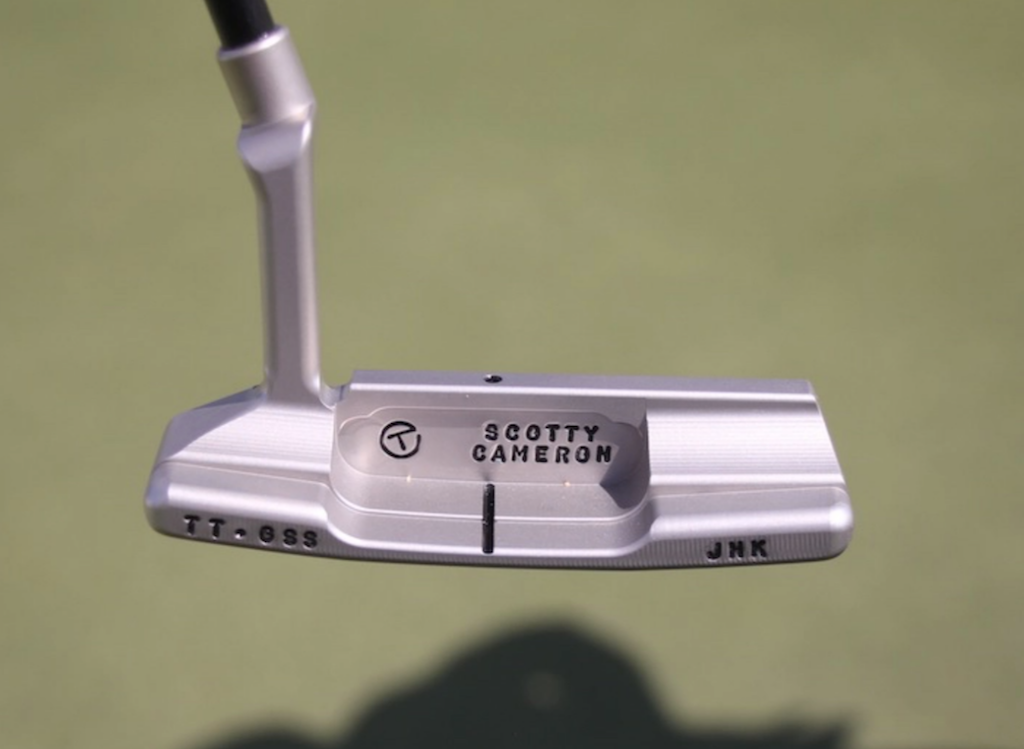
Tom Kim’s new custom Scotty Cameron blade-style putter
Cameron Smith (No. 3: Scotty Cameron 009M Prototype)
Collin Morikawa (No. 9: TaylorMade TP Soto)
Matt Fitzpatrick (No. 10: Bettinardi DASS Prototype)
Jordan Spieth (No. 13: Scotty Cameron 009 tour prototype)
Tony Finau (No. 14: Ping PLD Prototype)
Joohyung “Tom” Kim (No. 15: Scotty Cameron TourType GSS Prototype)
Hideki Matsuyama (No. 19: Scotty Cameron Newport 2 GSS)
Joaquin Niemann (No. 22: Prototype Ping PLD Anser)
Tommy Fleetwood (No. 24: TaylorMade TP Juno)
Ryan Fox (No. 26: Ping Anser 2D)
Thomas Pieters (No. 35: Scotty Cameron Squareback Select 2 Tour Only)
Talor Gooch (No. 38: Odyssey Tri-Hot Two)
Brooks Koepka (No. 39: Scotty Cameron Teryllium TNP2)
Kevin Na (No. 40: Odyssey Toulon Madison)
Kurt Kitayama (No. 41: Scotty Cameron Newport prototype)
Louis Oosthuizen (No. 42: Ping Vault 2.0 Voss)
Mito Pereira (No. 45: Ping Vault 2.0 Dale Anser Stealth)
Paul Casey (No. 47: Scotty Cameron 009M Prototype)
Alex Noren (No. 50: Odyssey O-Works 1W)
Top-50 in Strokes Gained: Putting
Mallet users: 70 percent (35 of 50 players)
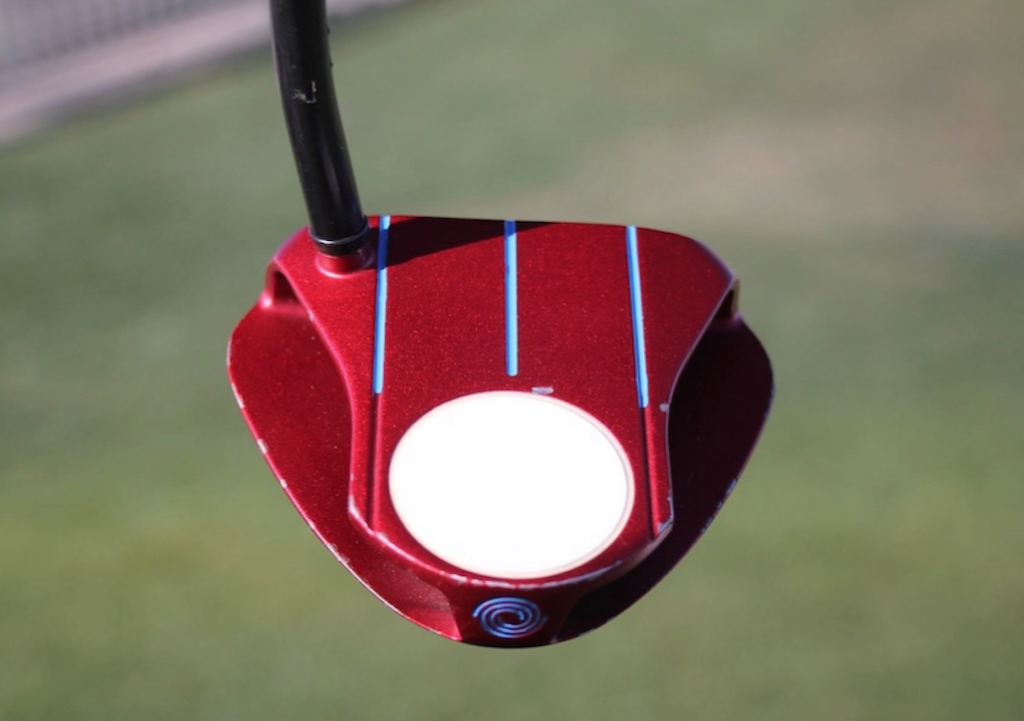
Kelly Kraft’s custom Odyssey Versa 1-Ball Red prototype mallet
Lucas Herbert (No. 1: TaylorMade Spider X Hydroblast)
Denny McCarthy (No. 2: Scotty Cameron GoLo N7)
Tyrrell Hatton (No. 4: Ping Vault Oslo)
Beau Hossler (No. 5: Odyssey 2-Ball Ten)
Christiaan Bezuidenhout (No. 6: Odyssey White Hot OG #7)
Kelly Kraft (No. 7: Odyssey Versa 1-ball Red Prototype)
Kevin Kisner (No. 9: Odyssey 2-ball 11)
Sam Burns (No. 10: Odyssey O-Works 7S)
Martin Trainer (No. 12: Scotty Cameron Circle T Prototype Phantom T12)
Chesson Hadley (No. 13: Odyssey White Hot OG 2-Ball)
Mackenzie Hughes (No. 14: Ping Scottsdale TR Piper C)
Rory McIlroy (No. 16: TaylorMade Spider Tour Hydroblast)
Ian Poulter (No. 17: Scotty Cameron T-11 Proto)
Justin Rose (No. 20: Axis1 Rose Prototype)
Billy Horschel (No. 21: Ping PLD Sigma 2 Tyne 4)
Matthew Wolff (No. 23: TaylorMade GT Notchback)
Adam Long (No. 24: Scotty Cameron T5 Proto)
Viktor Hovland (No. 25: Ping PLD DS 72)
Max Homa (No. 27: Scotty Cameron Phantom X T5.5 Prototype)
Patrick Cantlay (T28: Scotty Cameron T5 Proto)
Jon Rahm (T28: Odyssey Rossie S White Hot OG)
Wyndham Clark (No. 31: Scotty Cameron T5 Proto)
Xander Schauffele (No. 32: Odyssey O-Works #7 CH Red)
Vince Whaley (No. 33: Odyssey White Hot OG #7)
Rory Sabbatini (No. 34: Scotty Cameron Flowback Prototype)
Austin Cook (T35: Ping Sigma G Tyne)
Sungjae Im (No. 37: Scotty Cameron Flowback 5 Prototype)
Andrew Putnam (No. 38: Odyssey Stroke Lab Black Rossie)
Sepp Straka (No. 39: Odyssey Tuttle Stroke Lab)
Seamus Power (No. 40: Ping PLD3 Mallet)
J.T. Poston (T41: Scotty Cameron GoLo 5 Black Tour Prototype)
Adam Scott (T41: L.A.B. Golf Mezz.1 prototype)
Troy Merritt (No. 43: Yes! C-Groove Mollie Tour)
Jason Kokrak (T46: Bettinardi Studio Stock 38)
Mark Hubbard (No. 50: Odyssey Metal X Milled #9HT)
Blade users: 30 percent (15 of 50)
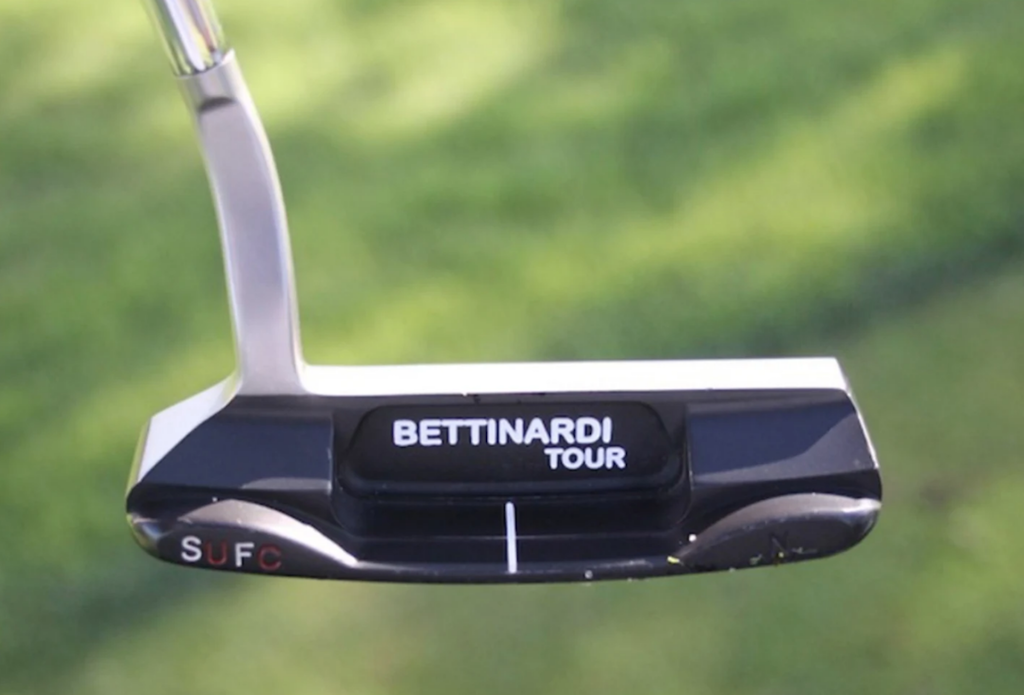
Matthew Fitzpatrick’s custom Bettinardi blade-style putter
Brendon Todd (No. 3: Sik Pro C-Series)
Cameron Smith (No. 8: Scotty Cameron 009M Prototype)
Matt Kuchar (No. 11: Bettinardi Tour Department SS28 DASS)
Marc Leishman (No. 15: Odyssey Versa #6)
Alex Noren (No. 18: Odyssey O-Works 1W)
Maverick McNealy (No. 19: Toulon Stanford MM Custom)
Matt Fitzpatrick (No. 22: Bettinardi DASS Prototype)
Tommy Fleetwood (No. 26: TaylorMade TP Juno)
Patrick Rodgers (No. 30: Odyssey Toulon San Diego)
Seung-Yul Noh (T35: Scotty Cameron Select Prototype)
Scott Stallings (No. 44: Scotty Cameron Newport 2.6 Prototype)
Brooks Koepka (No. 45: Scotty Cameron Teryllium TNP2)
Justin Lower (T46: PXG Prototype)
Richy Werenski (No. 48: Scotty Cameron Circle T Prototype)
Patrick Reed (No. 49: Odyssey White Hot Pro #3)
Conclusion
In 2018, 44 percent of the top-50 players in the Official World Golf Rankings were using mallet style putters, and 56 percent of the top-50 in strokes gained: putting were using mallet putters.
In 2022, 62 percent of the top-50 players in the OWGR use mallet style putters, and 70 percent of the top-50 in strokes gained: putting were using mallet style putters.
What do you think this means?
To me, it means that each golfer should try as many putters as possible – under the supervision of a professional fitter or local club professional – and find the best possible putter to fit their stroke style and preferences.
- LIKE184
- LEGIT41
- WOW14
- LOL5
- IDHT4
- FLOP2
- OB1
- SHANK13
Putter Reviews
REVIEW: Ping’s new PLD (Putting Lab Design) putters for 2022
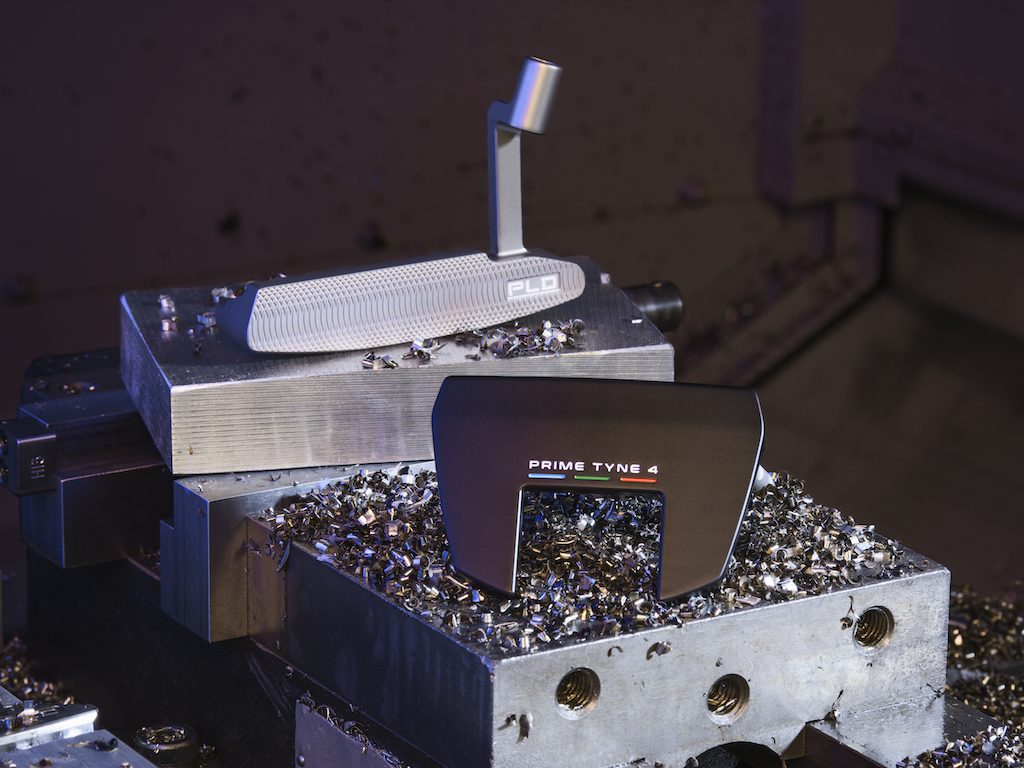
Not every golfer has access to custom-built golf putters like PGA Tour players do, but with Ping’s new PLD (Putting Lab Design) program, they can get pretty darn close.
Through the newly launched website, pingpld.com, golfers will have access to precision milled putters like the ones seen on Tour, and they can even customize their own putter with a Tour-level fitting experience either online or in person.
There’s three essential levels to the new PLD program: PLD Custom, PLD Limited and PLD Milled. Each of the levels comes with different putter options at differing price points.
“The PLD program allows us to bring golfers more of what we do best – design and build the highest-performing custom putters in the game,” said Ping President John K. Solheim, in a press release. “It offers nearly endless possibilities. Golfers can craft their own custom design through PLD Custom, choose the proven performance of a PLD Milled model or add to their putter collection by acquiring a PLD Limited. It gives golfers a chance to play what the pros play and own a piece of Ping history.”
“We established the PLD name several years ago as an extension of the PING Putting Lab,
where we’ve been fitting some of the top players in the world for more than 20 years,” said
Solheim. “Until now, access to the master fitters who deliver these custom putter experiences has been limited to the best players in the game. We can now bring golfers what they’ve been asking for either through a virtual or in-person experience.”
Below, we go further in-depth on each of the three options within the PLD program.
Ping PLD Milled
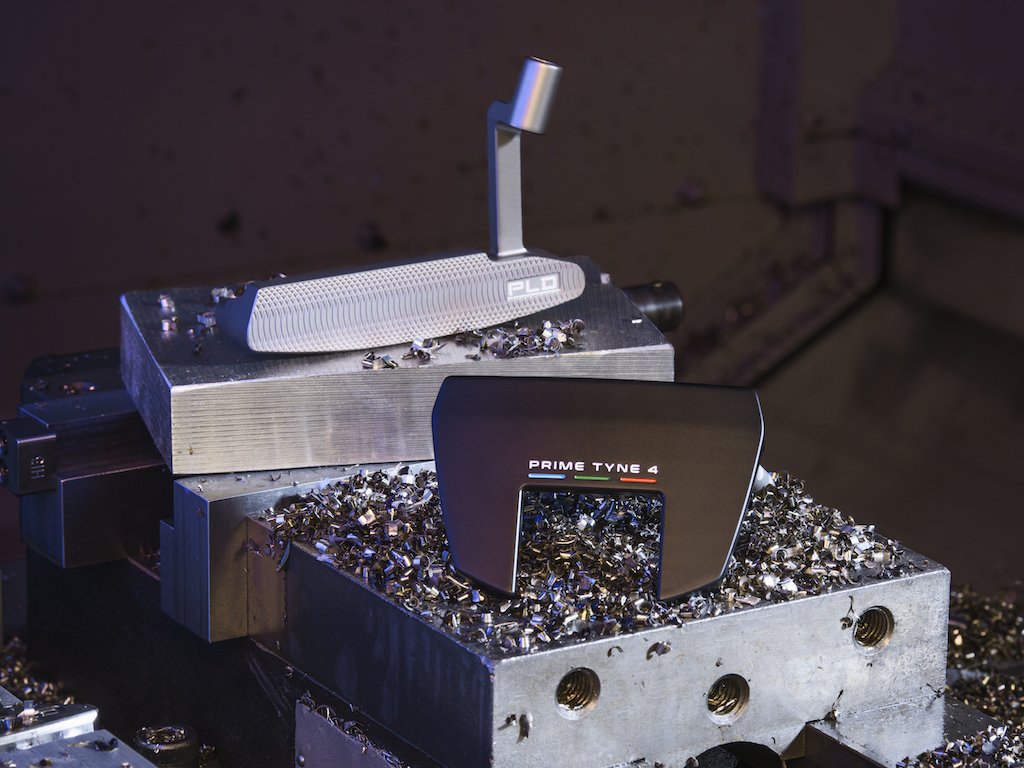
PGA Tour players such as Viktor Hovland, Tony Finau and Bubba Watson use Ping PLD precision milled putters, and now consumers will have access to those Tour-proven putters.
Each of the heads (Anser, Anser 2, DS72 and Prime Tyne 4) are machine milled from forged 303 stainless steel. Ping offers a breakdown of the specs for each available model, which will sell for $485 each:
Anser
Slight Arc
350g
Matte Black finish
Ping black graphite shaft
Lie Angle: 20° +/- 4°
Loft: 3° +3°/- 2°
Anser 2
Slight Arc
350g
Satin finish
Chrome stepless steel shaft
Lie Angle: 20° +/- 4°
Loft: 3° +3°/- 2°
DS72
Straight Stroke
365g
Satin finish
Chrome stepless steel shaft
Lie Angle: 20° +/- 2°
Loft: 3° +3°/- 2°
Prime Tyne 4
Aerospace grade, machined aluminum hosel
Strong Arc
360g
Matte Black finish
Matte-black stepless steel shaft
Lie Angle: 20° +/- 4°
Loft: 3° +3°/- 2°
“The PLD Milled is an exciting addition to our putter line,” said John K. Solheim. “We’ve
identified a couple of our most popular models from the past and some newer designs that have attracted a lot of attention in the last couple of years. We’ve given the new putters a very clean, premium look to emphasize the precision process they undergo before they are ready for play. As we collaborate on new designs with our engineers and tour staff through the PLD program, we’ll add new models to bring golfers the latest in tour-proven performance on the putting green.”
Ping PLD Limited
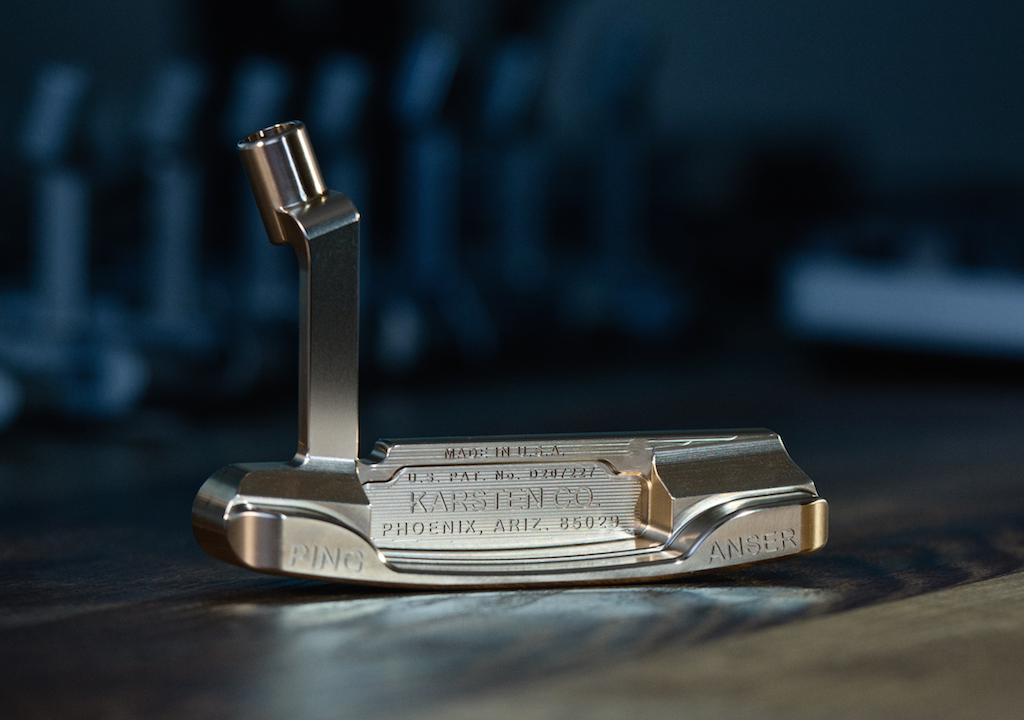
Ping’s PLD Limited will feature periodic limited-edition releases consisting of either putters that are played on Tour, or iconic designs from history. According to Ping, these putters are mostly targeted toward collectors, so they will have serialized numbers and will not be available for custom modifications.
For its first release ($790), Ping developed a 2022 version of the original Ping Anser, celebrating the 55th Anniversary of receiving the original Anser Patent on March 21, 1967.
“A lot of time has passed since the invention of the Anser putter,” said John A. Solheim, Ping’s Chairman & CEO and the youngest son of Karsten Solheim, who designed the original putter. “We think it’s important to remind the golf industry and some of the younger golfers that the iconic design they see with other brands’ name on it was created by Karsten in his garage in the mid-1960s. I was fortunate to be at his side building the first Ansers, and continued to do so for many years. It’s time Karsten gets the credit he deserves for inventing the Anser putter.”
Ping PLD Custom
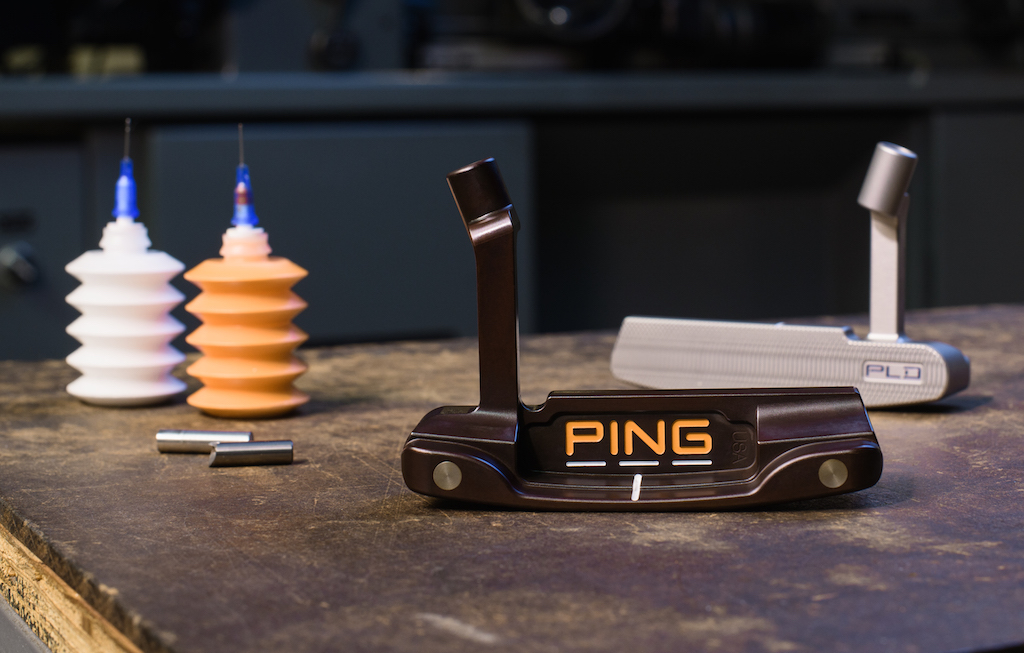
The highest level in the Ping PLD program feature the PLD Custom putters, where golfers can customize their own designs with either the help of a Ping Master fitter in person, or virtually through the PLD program online. To help golfers find their perfect putter, they will use the PLD iPing putting app, and a Ping Master fitter will analyze the player’s data to recommend a putter.
Then, golfers can fully customize the putter to their liking, with ability to change head model, Tungsten weighting, face milling, finish, alignment aids, stampings and paint fill. Ping’s Master Fitters will also help golfers get the correct length, lie angle and loft for their stroke and biometrics.
The putters themselves will sell for $1,290, and a $200 non-refundable payment is required to schedule and participate in a PLD Custom Fitting, whether it’s virtually or in person.
Personally, I received a Ping PLD Custom Fitting in-person at the company’s indoor facility in Phoenix, Arizona. After identifying my stroke flaws (of which there many) using Ping’s iPing putting app, I tried out a slew of different head options and we made head adjustments along the way to figure out what truly works. Here were my final specs:
Head model: Ping Anser
Finish: Patina
Weight: 350 grams
Alignment line/dot: None
Stamping: “T” on the hosel
Length: 35.5 inches
Shaft: Chrome Stepless Steel
Grip: PP58 Black Midsize
What blew me away most was how impactful length and lie angle can be on comfort at address and stroke pattern. Even minor changes felt drastic. Also, the depth of face milling can truly change both feel and sound; I never realized how much.
Another point of note: Switching up alignment lines obviously can affect aim, but for me, they also influenced my stroke itself due to the visual changes. I highly suggest going through a full putter fitting to determine what specifications you prefer for yourself.
Check out the photos below of the putter that was designed for me through my work with a Ping Master Fitter:
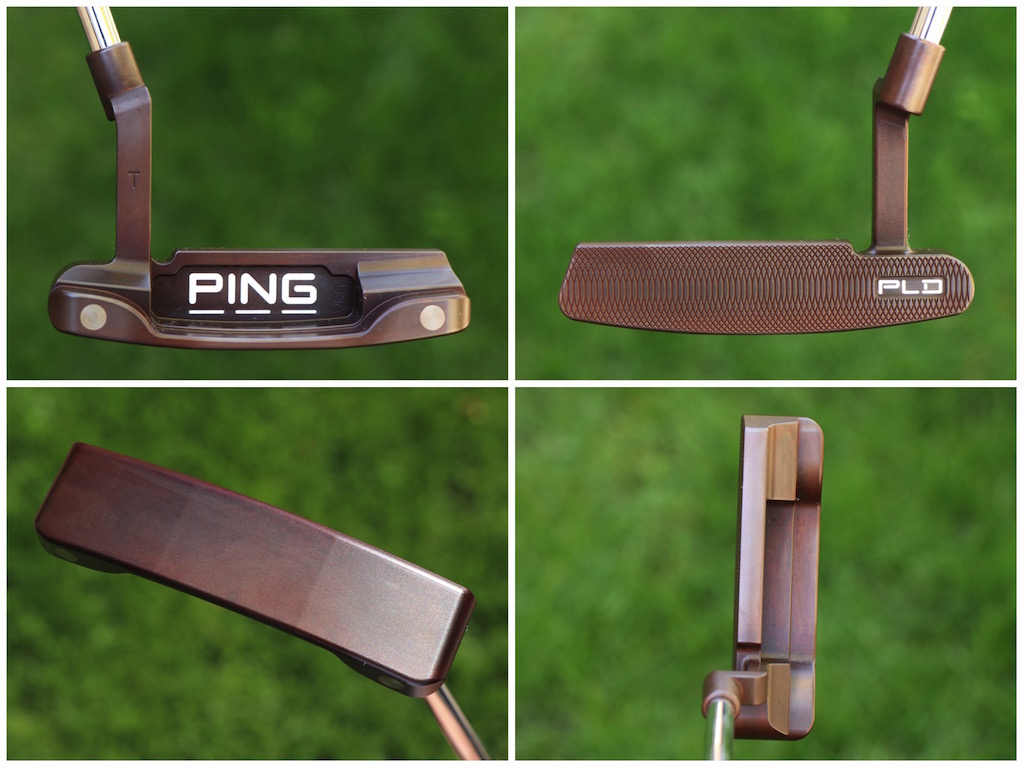
Ping PLD putters are available for pre-order today, and head over to Ping’s PLD website to book your own fitting here.
- LIKE126
- LEGIT12
- WOW15
- LOL4
- IDHT3
- FLOP1
- OB0
- SHANK10
Putter Reviews
WRX Spotlight Review: T Squared TS-713i Standard Series putter

Product: T Squared TS-713i Standard Series Putter
About T Squared: T Squared Putters is a small putter manufacturer just south of Buffalo, New York. The company was founded by Tony Tuber who created his first prototype putters, after hours, in his father’s machine shop. Since then Tony and his father have been creating high-quality putters in the same facility that creates high precision instruments for the medical field. They pride themselves on creating the highest quality, most precise putter they can offer. They offer a few different head shapes from small traditional blades to high MOI mallets and even a custom program to get exactly what you want.
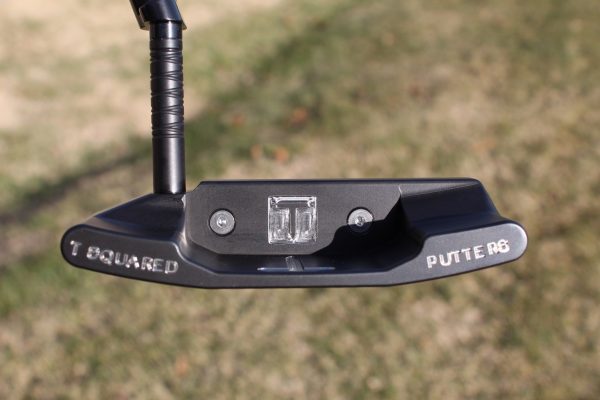
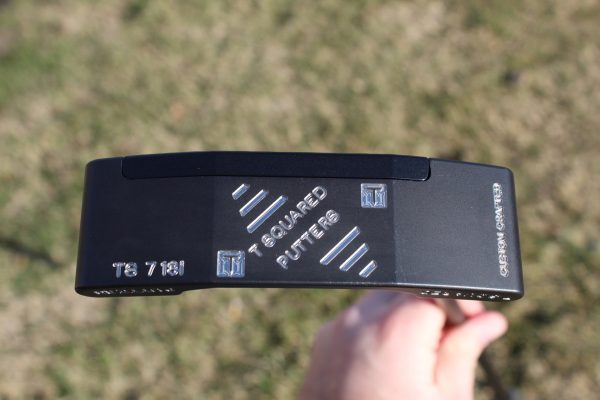
The Ts-713i Standard Series is based on the Ts-713, the first prototype that Tony created. It is a blade-style putter with a slightly longer flange and a unique face insert milled from 6061 aluminum. The body of the Ts713i is milled from a solid block of 303 stainless steel that is produced in the USA and has a Teflon backing between the body and face insert.
This Teflon backing helps give the putter a softer feel at impact and reduce any unwanted vibration. Details are what T Squared is all about and the neck of the putter shows off their milling expertise. The neck is similar to a plumbers neck, built with multiple pieces and offering some cool texture on the section bonded to the head. Another great detail is that all the silver markings on the putter are not filled with paint, they are milled into the head. T Squared finished the head in a sharp matte black and then milled all the markings on the putter for a unique, shiny silver look that really stands out. Ts-713i putters are built for customizing and have a ton of options that you can select if you would like to build something totally unique
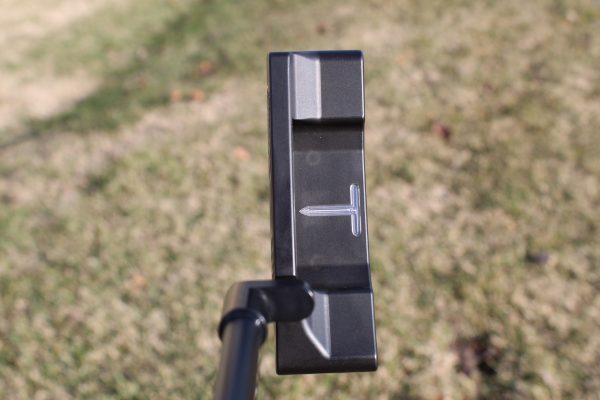
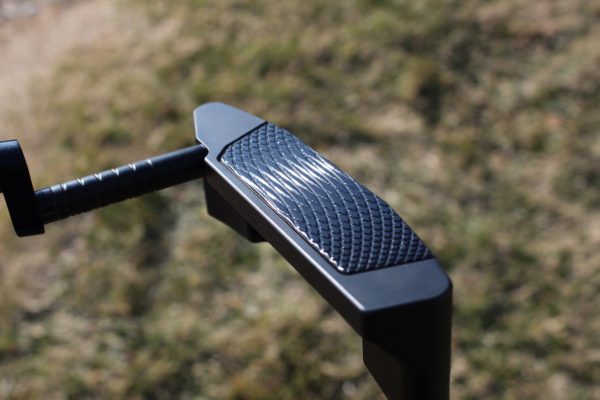
On the green, the T Squared TS-713i really performs fantastic. I found the feel at impact very solid without any unwanted vibration. The impact produces a muted click and soft feel that I wasn’t expecting from this aluminum insert and thin face. The deep milling and Teflon coated back to the insert really work together to produce a great, responsive feel that I enjoyed. Deep milling usually makes me a little worried because it can soften the putter too much and lose that feel we all demand.
The TS-713i has no issues and transmits impact feel back to your hands with ease. Mishits are a little louder and harsh, but nothing even close to unpleasant. I have used putters that don’t feel as good on perfectly struck shots as the TS-713i feels on mishit putts. Distance and accuracy on those mishit putts are not as drastic as you would expect with a blade putter. I often just missed the cup by small margins when I struck a putt on the toe or heel of the TS-713i. There aren’t too many blade putters that have shown this level of forgiveness on the green for me.
The “T” alignment aid on the flange of the putter is large and easy to use. Not only do you get a straight line from the face to the back edge for alignment, but the back of the “T” also helps you square the putter up to your target. The Pure grip is not my thing, and it would be great for T Squared to offer a few more options, but that is an easy fix and a very minor criticism.
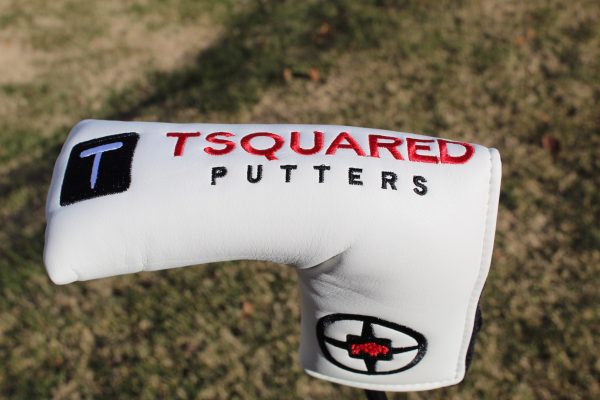
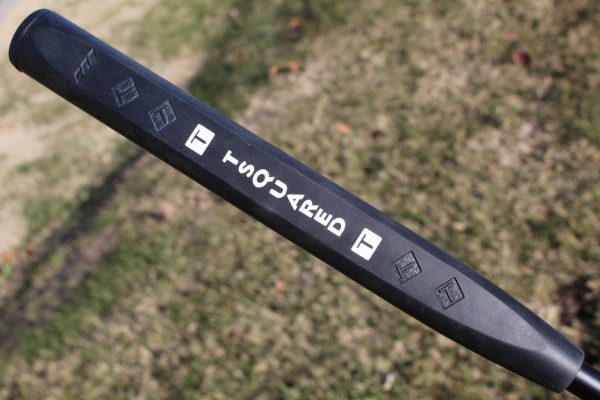
Overall, the T Squared TS-713i is a great putter from young Tony Tuber that exceeded my expectations. His attention to detail, precision milling, and take on a classic head shape offer golfers something different without sacrificing any performance. If you are looking for a great feeling putter that is made in the USA, you should take a look at T Squared and see what they can make for you.
- LIKE61
- LEGIT15
- WOW6
- LOL2
- IDHT2
- FLOP5
- OB0
- SHANK6
-

 19th Hole1 week ago
19th Hole1 week agoJohn Daly stuns fans into silence with brutal opening tee shot on PGA Tour Champions
-

 19th Hole1 day ago
19th Hole1 day agoThings got heated at the Houston Open between Tony Finau and Alejandro Tosti. Here’s why
-

 19th Hole2 weeks ago
19th Hole2 weeks ago2-time major champ announces shock retirement from the sport at age of 33
-

 19th Hole1 week ago
19th Hole1 week agoCharlie Woods finds it tough going on American Junior Golf Association debut
-

 19th Hole2 weeks ago
19th Hole2 weeks agoEdoardo Molinari reveals the latest PGA Tour golfer to turn down ‘good offer’ from LIV Golf
-

 Equipment3 weeks ago
Equipment3 weeks agoBest driver 2024: The best driver for you, as recommend by expert club fitters
-

 19th Hole2 weeks ago
19th Hole2 weeks agoScottie Scheffler had an interesting response when asked how he ‘quiets the noise’ following Players victory
-

 19th Hole2 weeks ago
19th Hole2 weeks agoJon Rahm dealt fresh blow to hopes of qualifying for 2025 Ryder Cup

















